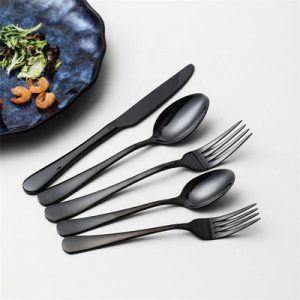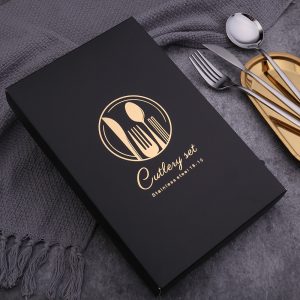Observing proper flatware etiquette at the table enhances the dining experience and shows respect for both your fellow diners and the meal. Here are some dos when it comes to using flatware:
- Napkin Etiquette:
- Place the Napkin: Unfold your napkin and place it on your lap as soon as you sit down.
- Use It Regularly: Use your napkin to wipe your mouth when necessary during the meal.
- Flatware Handling:
- Work from the Outside In: Use the outermost utensils first and work your way in with each course. Forks are typically on the left, and knives and spoons are on the right.
- Eating Utensils:
- Hold Utensils Correctly: Hold forks with the tines facing upwards and the knife with the blade facing inwards. Hold spoons with the bowl facing upwards.
- Cutting Food: Use the knife to cut your food and then switch the knife to your right hand to bring the food to your mouth. Do not cut more than a few bites at a time.
- Passing Food:
- Pass to the Right: If you’re passing food to someone else, pass it to their right using your right hand.
- Resting Utensils:
- Pause Position: When taking a break during the meal, rest your utensils on the edge of your plate. Do not place them fully on the table.
- Using Bread and Butter Utensils:
- Butter Knife Use: If there’s a butter knife, use it to spread butter or other spreads onto your bread. Place it on the bread plate afterward.
- Soup Etiquette:
- Spoon Direction: When eating soup, spoon it away from you, towards the center of the bowl.
- Fish Utensils:
- Fish Fork and Knife: If fish is being served, use the specialized fish fork and knife provided, typically with notches or unique shapes.
- Dessert Etiquette:
- Dessert Utensils: Use the dessert fork and spoon provided for dessert. Hold the fork in your left hand and the spoon in your right.
- Finishing the Meal:
- Signal You’re Done: When you’re finished with your meal, place your utensils side by side on your plate at the 4 o’clock position, with the handles at the bottom of the plate.
- Thank the Host:
- Appreciation: At the end of the meal, express your gratitude to the host or hostess for the meal.
- Be Polite and Considerate:
- Chew with Your Mouth Closed: Avoid talking with a mouth full of food, and chew with your mouth closed.
- Be Courteous: Use utensils quietly and avoid clinking them against your plate or glass excessively.
Remember that while these guidelines are important, the primary goal of dining etiquette is to make everyone at the table feel comfortable and respected. Adapt your actions to the specific situation, and don’t be overly anxious about every little detail. Good manners and consideration for others go a long way in creating a pleasant dining atmosphere.
















